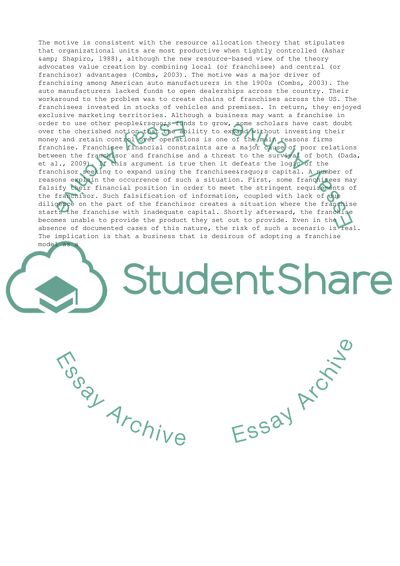Cite this document
(“Why might an existing non-franchised business choose to become a Essay”, n.d.)
Retrieved from https://studentshare.org/management/1688189-answer-one-question-from-the-following-how-can-franchisors-promote-innovative-behaviours-amongst-franchisees-without-damaging-franchise-system-standardisation-is-it-possible-to-align-the-goals-of-the-franchisor-and-hisher-franchisees-discuss-expla
Retrieved from https://studentshare.org/management/1688189-answer-one-question-from-the-following-how-can-franchisors-promote-innovative-behaviours-amongst-franchisees-without-damaging-franchise-system-standardisation-is-it-possible-to-align-the-goals-of-the-franchisor-and-hisher-franchisees-discuss-expla
(Why Might an Existing Non-Franchised Business Choose to Become a Essay)
https://studentshare.org/management/1688189-answer-one-question-from-the-following-how-can-franchisors-promote-innovative-behaviours-amongst-franchisees-without-damaging-franchise-system-standardisation-is-it-possible-to-align-the-goals-of-the-franchisor-and-hisher-franchisees-discuss-expla.
https://studentshare.org/management/1688189-answer-one-question-from-the-following-how-can-franchisors-promote-innovative-behaviours-amongst-franchisees-without-damaging-franchise-system-standardisation-is-it-possible-to-align-the-goals-of-the-franchisor-and-hisher-franchisees-discuss-expla.
“Why Might an Existing Non-Franchised Business Choose to Become a Essay”, n.d. https://studentshare.org/management/1688189-answer-one-question-from-the-following-how-can-franchisors-promote-innovative-behaviours-amongst-franchisees-without-damaging-franchise-system-standardisation-is-it-possible-to-align-the-goals-of-the-franchisor-and-hisher-franchisees-discuss-expla.


